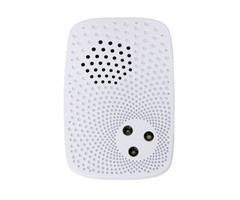Hi DIYers! After you sign-up for monitoring service and get your system, you still need to have it activated! This is a one-time process that is used to get your system up and running and communicating properly. We have some tips to make sure that your alarm system activation is successful.

Alarm Grid is a DIY monitoring company. All the support we provide is either online or over the phone. When you sign up for one of our self-monitoring plans, we can usually activate your account remotely, with no one onsite. However, if you sign up for one of our central station monitored accounts, the process is slightly more involved and requires an appointment. Anyone on-site can complete this process, so you can certainly ask a spouse, relative or a roommate to do this on your behalf.
During your activation appointment, you will be on a live phone call with one of our support technicians. The technician will create your account, verify the information you have provided for the monitoring company, and walk you through a test to verify a working system. Our activation appointments are allotted one hour. We know that your time is valuable, so we want to ensure that the process goes smoothly and quickly and results in a successful activation!
The basic premise behind an activation is that you will have a pre-arranged time slot during which an Alarm Grid activator will call you and provide you with one-on-one and focused attention to help program your system to communicate successfully. You will receive information beforehand via email with some basic guidelines to follow. This is designed to help get you ready for your activation. Remember, nobody is going to come out to your home or business. Your Alarm Grid activation will be completed over the phone, and you will be the one working at the panel.
While our team members will certainly do their jobs, you have to do your part as well for the activation to be successful! By following these five tips, you can help us perform our duties more effectively and make the overall process easier for both of us:
1. Be on-site. Although our support is provided over the phone, an account activation occurs at the panel or keypad. Security systems cannot be initially set up or programmed remotely. You, or a designee, need to be on-site with the system to complete the activation. If you aren't on-site, we will need to reschedule the activation. There are no exceptions to this rule, and a rescheduled activation is very inconvenient for both of us. Don't think that you can activate your system while you are driving, on a plane, or on vacation. You must be at your home or business directly in front of the panel. All the work will be completed right there.
2. Know your codes. Many panel activations are stalled or terminated because a customer does not know their codes. We have no way of seeing any system codes until the system is activated. You really need to know these codes to complete the process. For activation, you will need to know the system's Installer Code. This is the system code used for menu-level programming. If the system is brand-new, then the Installer Code is almost certainly at its default. If the system has been monitored before, then a different monitoring company may have changed the code to lock the customer out of programming.
Knowing your Installer Code is crucial as a DIY user. After all, you will want to be able to make your own system programming changes when needed. At Alarm Grid, we work to empower our customers and prevent them from ever being locked out of programming mode. That is why we advise our customers to keep their Installer Codes at default. If you don't know your Installer Code, trying the default first is always a good option. If that code doesn't work, then you may need to get the information from your prior monitoring company. If they are refusing to provide your Installer Code, then they are holding your system hostage, and you can often threaten legal action!
Keep in mind that some systems offer the option for a backdoor method that can be used to get into programming if the Installer Code is lost. Once you are inside programming, you can change the Installer Code to something you know. However, this process is not possible for every panel. Any backdoor steps should be completed prior to your activation, as it takes up valuable time to complete the process. Alarm Grid offers the following FAQs that cover the backdoor process:
The default Installer Code can usually be determined by the manufacturer of the panel. Keep in mind that there are occasionally some panels that break this norm. The typical default Installer Code and Master Code for various alarm system manufacturers is shown in the table below:
Manufacturer
|
Installer Code
|
Master Code
|
Honeywell
|
4112
|
1234
|
2GIG
|
1561
|
1111
|
Qolsys
|
1111
|
1234
|
Interlogix/GE
|
4321
|
1234
|
DSC
|
5555
|
1234
|
3. Program beforehand. Having to go through and program a panel will slow down any system activation. You really should have most or all of this process completed prior to your scheduled activation slot. Of course, if you have any questions or troubles with programming, then our team is happy to help. But just remember that it gets in the way of our main task of configuring the system. Getting an early start with programming is a great way to start learning your system and setting things up the way you want. This includes things like learning-in sensors and adjusting Entry and Exit Delay timers to your liking.
We offer many FAQs and videos that can help you complete various programming tasks. We also encourage you to use the search bar in the upper-right corner of our website to browse through any content we have created. Also, keep in mind that there may be answers elsewhere. You can always search Google or YouTube to see what solutions and guides you come across. We fully understand that the typical DIY user will have a few minor programming questions; that is to be expected. But whatever you can figure out and complete yourself will save trouble and time during your appointment!
4. Listen to your technician. One thing you can most definitely expect during your activation is to receive instructions from your Alarm Grid technician. It is very important that you listen carefully and follow these instructions exactly as described. Your technician is working to get you through the process as quickly and accurately as possible. The steps we provide and the tasks we ask you to complete are given for a reason. We're trying to help you to keep your family, and your property safe. So put on your best listening ears and follow our instructions. Before you know it, you'll be ready to go with a complete security system!
5. Minimize conversation. Our support technicians are all very friendly, and we will gladly listen to you. But just remember that we're here to get a job done within a relatively small time window. We understand that you may be very excited about getting a new alarm system. And if you just moved into a new home, then you most definitely have some interesting stories to tell about the experience. We realize that you probably want to tell everyone about your new house that you've worked hard for. And while that's great, too much idle chatting slows down our activation.
Look, we know that some small talk is to be expected. We enjoy talking with our customers and providing friendly service. That's one of our top goals. But we also want to move through the process efficiently. If you start getting off-task, then it will not be in the best interest of our activation. While we won't shoot down any customer who wants to socialize, we will be trying to subtly move the process along. You're certainly free to talk with us during your activation, but you may want to save any deep conversations or lengthy stories for a neighbor, your family, or your co-workers at the water cooler. It's nothing personal, we just have a job to do!
Have you signed up for Alarm Grid monitoring yet? If not, now is a great time to get started. Just click the orange Monitoring button at the top of the page to check out our plans. You can also start browsing our site for a security system to install in your home or business. If you need help planning an Alarm Grid security system, reach out to us by emailing support@alarmgrid.com. We also accept phone calls at (888) 818-7728 during our normal business hours of 9 am to 8 pm EST M-F. We look forward to working with you during your activation!














 It's no secret that customer-oriented businesses and security cameras are the perfect match. A video surveillance system is great for catching theft and dishonest bait-and-switch tactics that a small number of dishonest people may try to get away with. But what you might not think of is using security cameras to protect your company in case of a lawsuit.
It's no secret that customer-oriented businesses and security cameras are the perfect match. A video surveillance system is great for catching theft and dishonest bait-and-switch tactics that a small number of dishonest people may try to get away with. But what you might not think of is using security cameras to protect your company in case of a lawsuit.






 The firmware update is version 3.2.1.6653. Although the changes it offers are relatively minor, it's still worth downloading for users who want to get the very most out of their GC3 Systems. The biggest change is the addition of the screensaver feature, which will also likely be referred to as the slideshow feature. Users can add personal photos to a USB drive and transfer them to their GC3 System or associated
The firmware update is version 3.2.1.6653. Although the changes it offers are relatively minor, it's still worth downloading for users who want to get the very most out of their GC3 Systems. The biggest change is the addition of the screensaver feature, which will also likely be referred to as the slideshow feature. Users can add personal photos to a USB drive and transfer them to their GC3 System or associated 